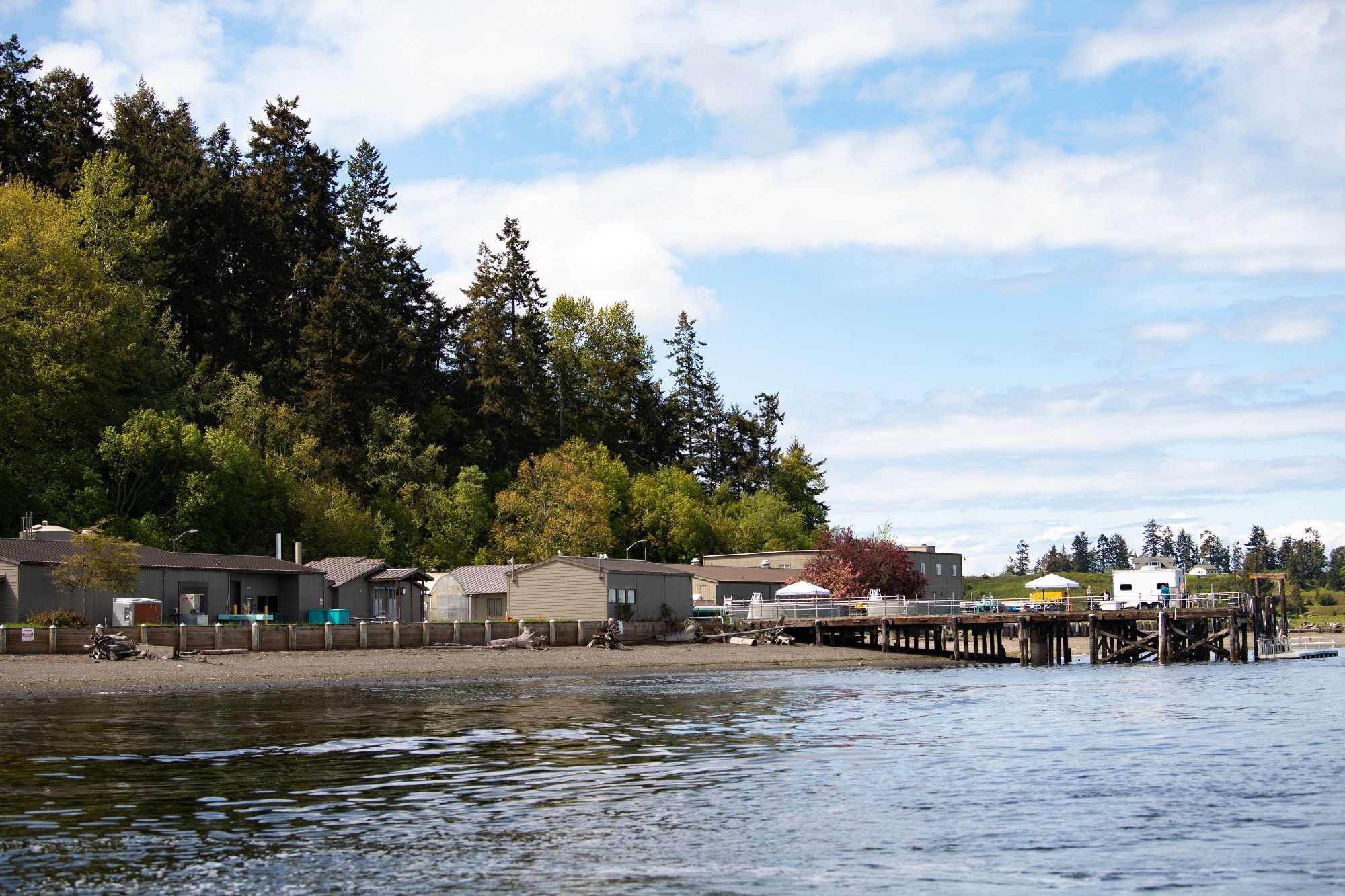Reviewed by Mila PereraSep 26 2022
Humans have extracted salts such as table salt from the ocean since ancient times. Scientists know that seawater is an abundant source of diverse minerals and are investigating which ones they can extract.

Seawater from the PNNL-Sequim campus fueled this research project. Image Credit: Andrea Starr | Pacific Northwest National Laboratory
The ocean is rich with magnesium, a mineral with various applications.
Magnesium is associated with sustainability-associated uses, including low-carbon cement, carbon capture, and batteries. These applications are drawing fresh attention to the domestic production of magnesium.
Currently, magnesium is procured in the United States via an energy-concentrated process from salt lake brines, some of which are at risk from droughts. The Department of Energy has included magnesium in its newly released list of critical materials for domestic production.
Scientists at Pacific Northwest National Laboratory (PNNL) and the University of Washington (UW) have discovered a simple method to separate pure magnesium salt, a feedstock for magnesium metal, from the ocean.
Their new technique requires two solutions to flow side-by-side in a long stream. Details of the process, called the laminar co-flow method, are in an article published in Environmental Science & Technology Letters.
The process exploits the fact that the flowing solutions form a continuously reacting boundary. Fresh solutions flow by, preventing the system from reaching a balance.
This technique attempts to perform a new trick using an old method. In the middle of the 20th century, chemical companies successfully created magnesium feedstock from seawater by blending it with sodium hydroxide, or lye.
The resulting magnesium hydroxide salt was then processed to create magnesium metal. The process created a complex mixture of calcium and magnesium salts, which were tough and expensive to separate.
By comparison, this latest study creates pure magnesium salt, allowing more effective processing.
Normally, people move separations research forward by developing more complicated materials. This work is so exciting because we’re taking a completely different approach. We found a simple process that works. When scaled, this process could help drive the renaissance of U.S. magnesium production by generating primary feedstock. We're surrounded by a huge, blue, untapped resource.
Chinmayee Subban, Chemist, Pacific Northwest National Laboratory
From Sequim Water to Solid Salt
The team tested the method using seawater from the PNNL-Sequim campus, letting the researchers take advantage of PNNL facilities across Washington State.
“As a Coastal Sciences staff member, I just called a member of our Sequim chemistry team and requested a seawater sample,” said Subban. “The next day, we had a cooler delivered to our lab in Seattle. Inside, we found cold packs and a bottle of chilled Sequim seawater,” adds Chinmayee.
This study represents the collaboration that can take place across PNNL’s Richland, Seattle, and Sequim campuses.
In the laminar co-flow method, the scientists flow seawater alongside a solution containing hydroxide. The magnesium-comprising seawater quickly reacts to develop a layer of solid magnesium hydroxide. This thin layer serves as a barricade to solution mixing.
The flow process produces dramatically different results than simple solution mixing. The initial solid magnesium hydroxide barrier prevents calcium from interacting with the hydroxide. We can selectively produce pure solid magnesium hydroxide without needing additional purification steps.
Qingpu Wang, Postdoctoral Researcher, Pacific Northwest National Laboratory
The process’ selectivity renders it powerful. Producing pure magnesium hydroxide without any calcium adulteration allows scientists to avoid costly and energy-intensive purification steps.
Future Sustainability
The new, gentle process can be sustainable. The sodium hydroxide used to pull out the magnesium salt can be produced on-site using marine renewable energy and seawater.
Removing magnesium is an essential pre-treatment for the desalination of seawater. Connecting the new process with current technologies could make it cheaper and simpler to convert seawater into freshwater.
The researchers are enthusiastic about the technique’s future. Their study is the first demonstration of the laminar co-flow method for selective separations.
This novel method has numerous other possible applications, but more work must be carried out to understand the fundamental chemistry of the process.
The knowledge gap provides new opportunities and research paths for powering the blue economy.
We want to take this work from the empirical to the predictive. There is an exciting opportunity to develop a fundamental understanding of how this process operates while applying it to important problems like creating new energy materials and achieving selective separation of hard-to-separate ions for water treatment and resource recovery.
Elias Nakouzi, Materials Scientist, Pacific Northwest National Laboratory
This study was aided by the PNNL Laboratory Directed Research and Development program. Chinmayee Subban is also an Affiliate Professor of Materials Science and Engineering at UW. Elisabeth Ryan of UW was also a co-author of the study.
The present development of this technology is aided by the Department of Energy, Office of Energy Efficiency and Renewable Energy, Water Power Technologies Office under the Marine Energy Seedlings Program.
Journal Reference
Wang, Q., et al. (2022) Flow-Assisted Selective Mineral Extraction from Seawater. Environmental Science & Technology Letters. doi.org/10.1021/acs.estlett.2c00229.